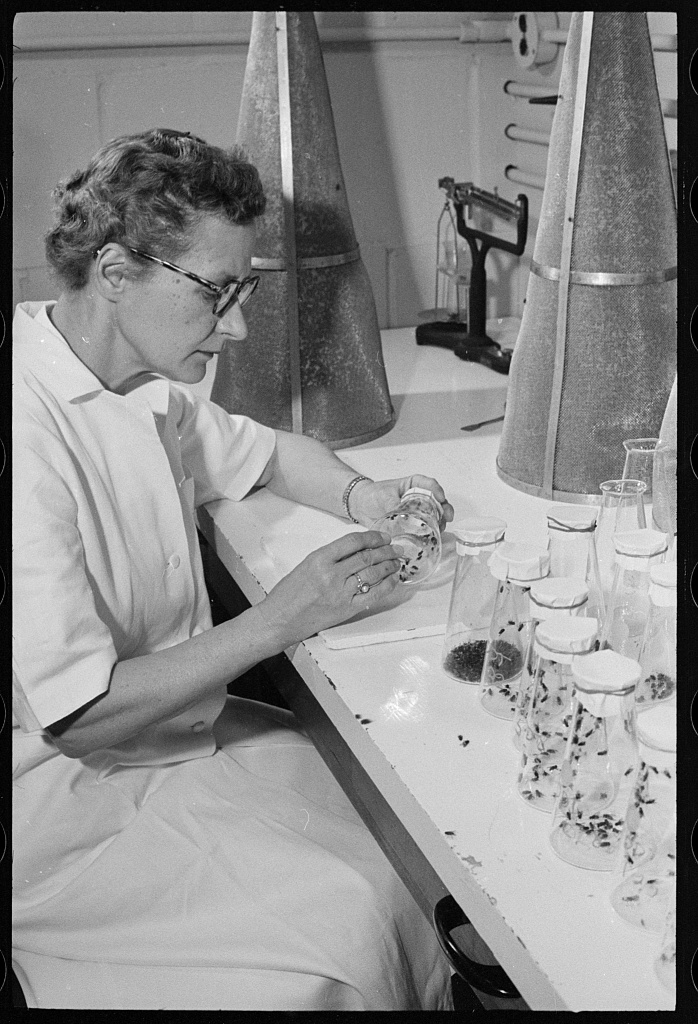Abstract: The brain perceives not only what is seen by the eyes but also processes experience and expectations to sometimes perceive not exactly what was seen Magic tricks depend on the perception of the eye Optical illusions and moving picture frames show that the eye can be tricked The ability to detect movement is relative but eyes can determine distance by working together
Date Published: 1952-12-01
Abstract: Research underway at the School of Aviation Medicine at Randolph Air Force Base in Texas investigates the effect of oxygen deprivation at high altitudes night vision motion sickness and the effect of low temperatures
Date Published: 1952-04-07
Abstract: Great scientists and their research are discussed including Elmer V McCollum and his discovery of vitamins A D and B1 John Boswell Whitehead and his work on dielectrics Alexander Graham Christies work on power plant design the philosophy of George Boas applying the world of ancient Greece to modern thought archaeology in the Near East by William Foxwell Albright and Robert Williams Wood and his research into diffraction gratings and infrared filters There is also a discussion of operations research and its applications in the American military effort
Date Published: 1952-05-05
Abstract: Solar power is used by plants for creation of starch and sugar which releases oxygen into the air This process is known as photosynthesis Research into solar energy will lead to harnessing the energy from the sun to become a reliable source of power
Date Published: 1952-02-11
Abstract: Scientific research at American universities has led to many important discoveries and applications during the first half of the twentieth century Research on botulism kidney function human heat tolerance xrays and other topics from the University of California at Berkeley University of Pennsylvania UCLA Indiana University and other institutions are featured
Date Published: 1951-12-31
Abstract: Researchers design propellers for torpedoes so that they can go faster farther quieter and travel more accurately Use of a water tunnel helps measure cavitation that aids in the design of propellers that will reduce cavitation to benefit US naval operations
Date Published: 1952-03-24
Abstract: Small amounts of money invested in scientific research have led to great benefits for mankind worth many times the initial investments Great strides in research have brought about the development of the magnetic recorder silica gel as a drying agent coal power as an energy source for large motors and the use of the spectroscope in the steel industry and astronomy
Date Published: 1952-02-25
Abstract: Introduced by American ambassador to Great Britain Walter Gifford this is the first British television program recorded and broadcast in the United States A history of television in Britain follows from the father of British TV John Logie Baird to the present where television signals are carried throughout the country by cables and radio links to broadcast towers from London to Scotland A brief film of an early British television program originally broadcast in 1936 with the singer Sylvia Peters and ballerina Margot Fonteyn is shown This is the first of three broadcasts originating in Great Britain about developments in British science and is the only one known to still be in existence
Date Published: 1952-05-07
Abstract: Photogrammetry is the science of obtaining reliable measurements through the use of photography It is the most efficient accurate and economic method for mapping large land areas Aerial photographs are analyzed through triangulation methods to accurately determine terrestrial and hydrographic mapping to aid in navigation
Date Published: 1952-03-03
Abstract: To show how isotopes can be used to locate elements in the body Dr Robert Ballentine drinks radioactive iodine 131 at the start of the program Later he uses a Geiger counter to show the level of radioactivity in his stomach and thyroid where it accumulated Such a tracer can be used in biological research and as a medical diagnostic tool Dr Ballentine further describes the characteristics of isotopes the Brookhaven Pile at Brookhaven National Laboratories and how isotopes are obtained
Date Published: 1952-04-21
Abstract: A history of basic research is presented beginning with Dr Ira Remson the first professor of organic chemistry at Johns Hopkins University and his research into the atomic nature of matter and isotopes Some important findings occur by accident like the discovery of saccharine Pure research can have far reaching applications to make the practical discoveries of tomorrow
Date Published: 1951-11-12
Abstract: Early detection is stressed throughout this series on cancer In this program Dr Warfield M Firor shows cross sectional slides of cancerous breasts explains the nature of the disease in female breasts and discusses research being done in this field He guides the viewers through a film of breast surgery as it is being performed and discusses William S Halsteds 1890 surgical procedure Breast cancer survivors demonstrate their range of motion and muscle tone For cancer recurrence Dr Firor recommends excision of the growth hormone therapy or xray therapy He also addresses male cancer of the breast The program concludes with a brief description of three cancer experiments being conducted by Johns Hopkins University researchers
Date Published: 1953-01-12
Abstract: A demonstration of automatic door openers powered by photoelectric cells highlight this presentation The uses of the electric eye include the detection of impurities in food products and the separation of vegetables for size and quality
Date Published: 1951-10-15
Abstract: Fluorine is needed for healthy tooth growth and to prevent tooth decay Studies show that areas with fluoridated water supplies have much less incidence of tooth decay in children One part of fluorine added to a million parts of water is the optimum amount Addition of fluorine does not affect the color taste odor or turbidity of the water
Date Published: 1952-01-28
Abstract: The process of blood transfusion is explained as it passes from the donor to the blood bank to the recipient The discovery that the addition of sodium citrate to blood will preserve blood and keep it from coagulating led to the development of blood banks
Date Published: 1951-11-19
















